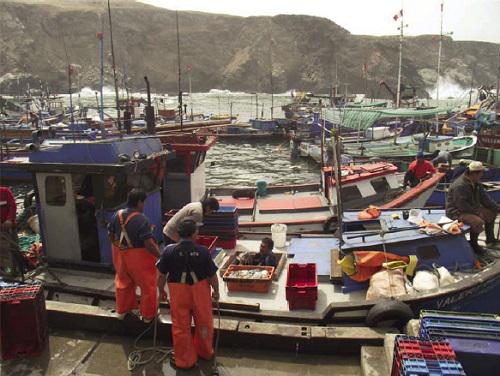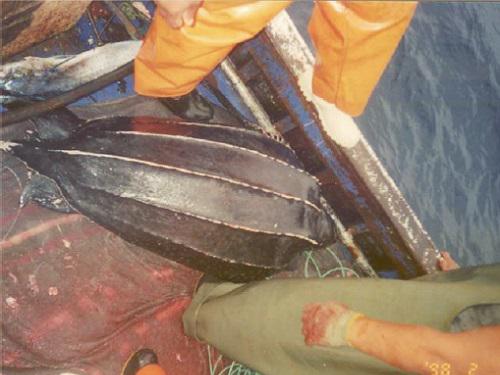This project will evaluate the interactions between albatross and petrel and longline fishery (industrial and artisanal) in northern Peru, using on-board observers and interviews with the purpose to know spatial and seasonal distribution of that interact.

Matarani Port.
This project will evaluate the interactions between albatross and petrel and longline fishery (industrial and artisanal) between 6 and 10° S using on-board observers and interviews in a year with the purpose to know spatial and seasonal distribution of that interaction. We will develop the major effort in the Peruvian cost. Besides, we will obtain information about the relative abundance of these seabirds in at least two fishing areas (longline and gillnet fishery) from two surveys at sea. This study will involve observers with experience (industrial vessels), and artisanal fishermen will be trained as observers (artisanal vessels), so they will be agents between other fishermen to conserve seabirds.

Leatherback turtle (Dermochelys coriacea), incidental by-catched.
Also, we will develop an information and diffusion campaign about this conservation issue among fishermen associations and industrial fishery companies, we will inform about the possibility to participate in better markets through fishery certifications (Fishery of Common Dolphinfish) of the Marine Stewardship Council. Besides, we will take information about interaction with marine mammals, sea turtles among others.
Studies to evaluate the by-catch of albatross and petrel in artisanal and industrial fishery in Peru are scarce. In 2001, Jahncke et al reported the by-catch of albatross by the entire fleet between 2370 to 5610 birds. In 2006, Awkerman et al reported incidental and intentional capture by artisanal fleet in Salaverry port. Between 2006 and 2008, Ayala et al monitored some industrial and artisanal vessels. We did not report any capture in 381 521 hooks, 171 sets (the major effort in Peru) although 42% of fishermen indicated that they have captured albatross in longline vessels. However, this study is only 0.5% of observation effort to all longline fishery effort in Peru.
What is more, there is scarce information about the variation of distribution and abundance of albatross and petrel in the fishing areas in Peruvian sea. Only Peruvian Sea Institute (IMARPE) take timely information of that as a part of annual surveys of fish stocks in Peru.
Results of this Project will be reported to authorities of National Institute of Natural Resources, Production Ministry (Fishing Vice- Ministry) and Peruvian Sea Institute (IMARPE). We will obtain technical information to know the real situation of the interactions between albatross and petrel and longline fishery.

